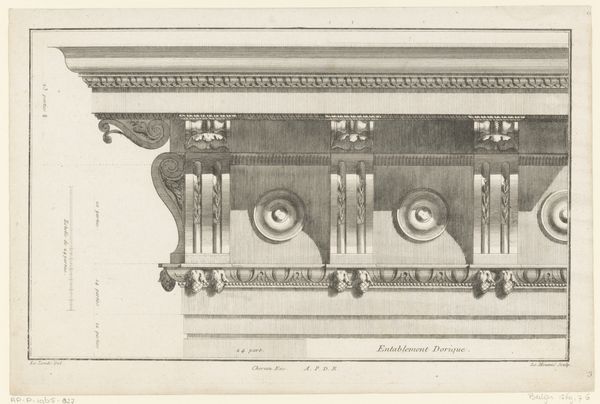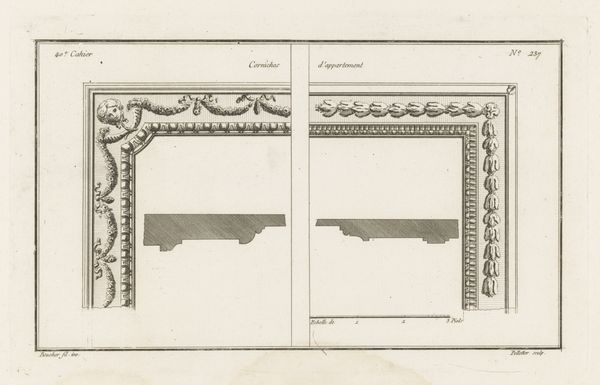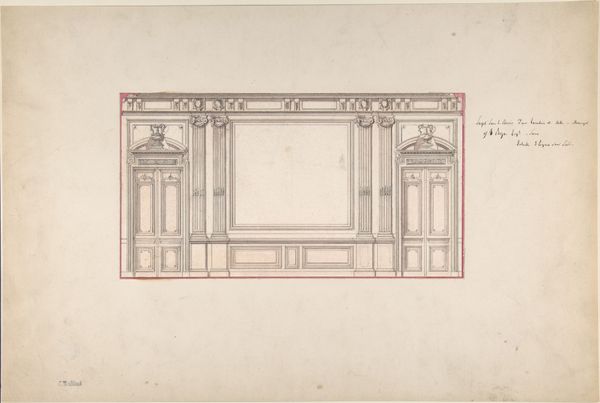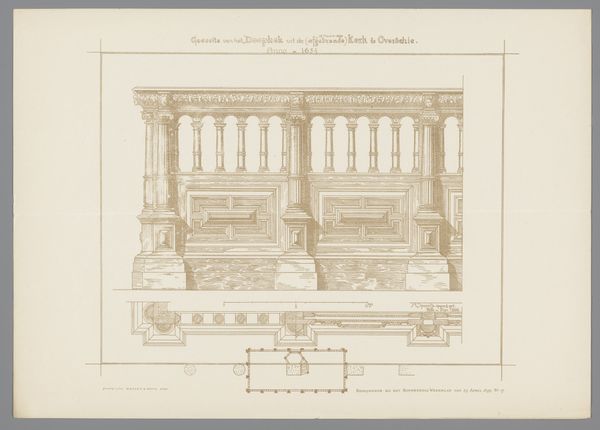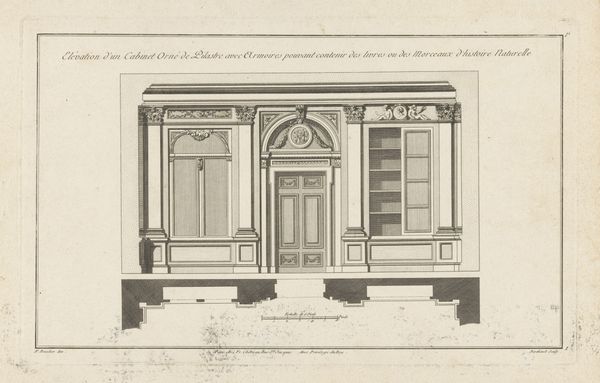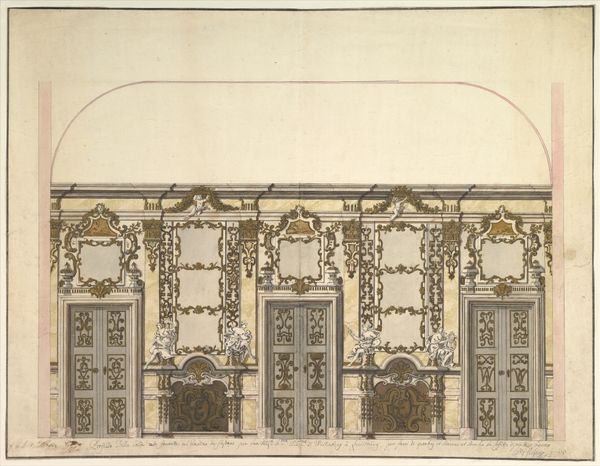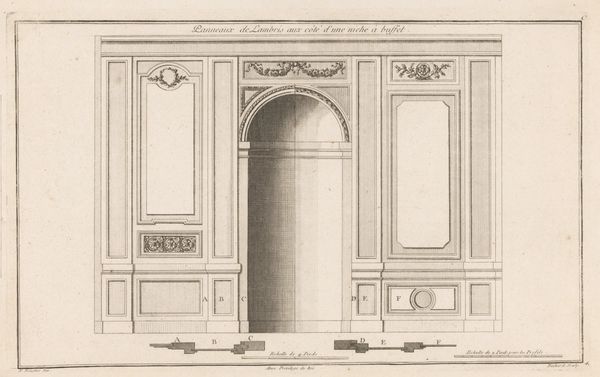
Design for the Entrance of the Loggia of the Villa of Pope Julius 1710 - 1727
0:00
0:00
drawing, print, paper, architecture
#
drawing
#
baroque
# print
#
perspective
#
paper
#
11_renaissance
#
geometric
#
arch
#
line
#
architecture
Dimensions: 11-9/16 x 17-5/8 in. (29.3 x 44.8 cm)
Copyright: Public Domain
Editor: This drawing, "Design for the Entrance of the Loggia of the Villa of Pope Julius" by Pietro Paolo Coccetti, dating from 1710 to 1727, depicts a study of Renaissance architecture, a design of arches with an exploration in spatial perspectives. The monochromatic washes lend it a blueprint-like quality, yet the detail feels very artistic and planned. How would you read into the work given it's attention to design? Curator: As a materialist, I'm drawn to consider this drawing less as a window into Renaissance ideals and more as an artifact of production itself. The very act of creating this drawing is important. Look at the labor involved in the detailed linework and careful application of washes. How does the artist’s hand shape our understanding of architecture? Is this drawing intended to serve a functional, technical role? And for whom was it produced? Editor: So, you're thinking about who made this and what their intention might have been? Curator: Exactly. The drawing allows us to think about the economy of architectural design during the 18th century, the materials used for its execution, its social, possibly even pedagogical functions. What materials did Coccetti have access to? Were they of high or low quality, and how did that availability influence his process? I mean, were these sketches part of a larger commission perhaps and where would these types of material decisions appear when designing? Editor: It is interesting to consider beyond the architecture as high art to focus more on the physical making. Curator: Yes, by considering the material and economic realities, we demystify art and architecture, placing it within reach and social and historical realities. What new questions emerge as a result? Editor: Definitely! Looking at art through a lens of labor and materials gives me a fresh perspective. Thanks for the guidance!
Comments
No comments
Be the first to comment and join the conversation on the ultimate creative platform.



